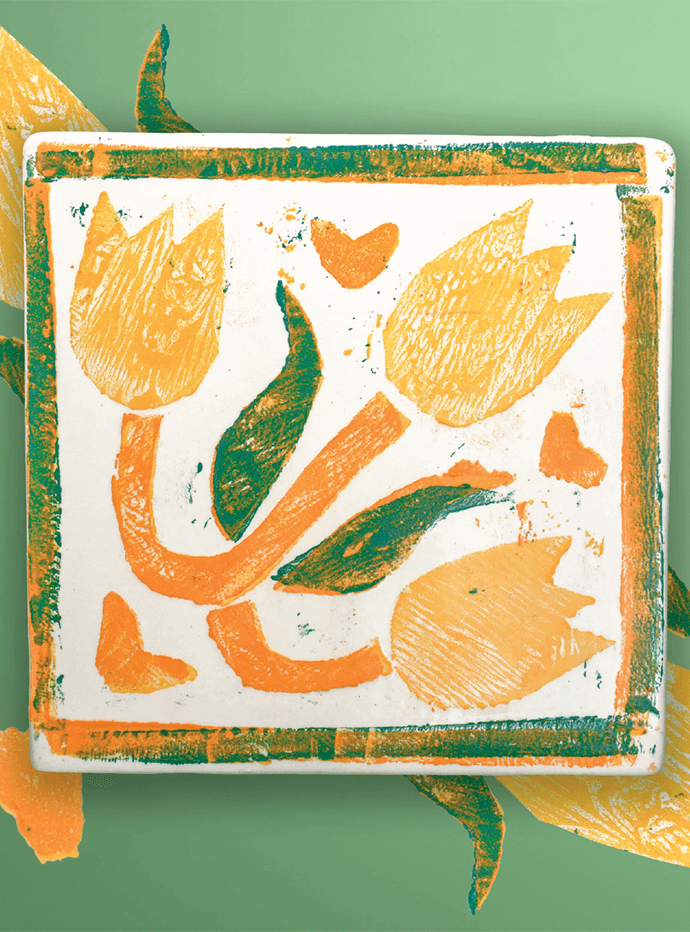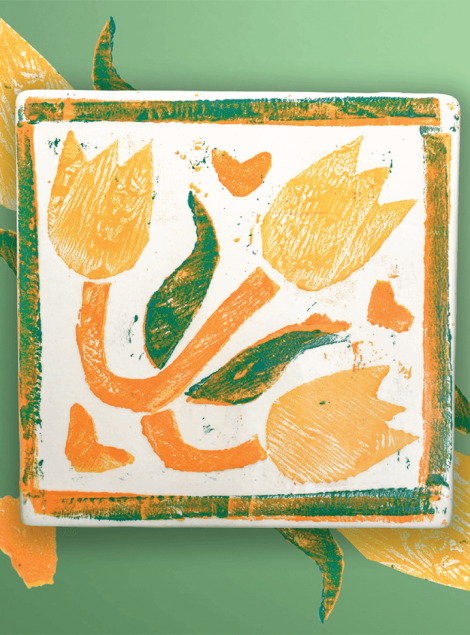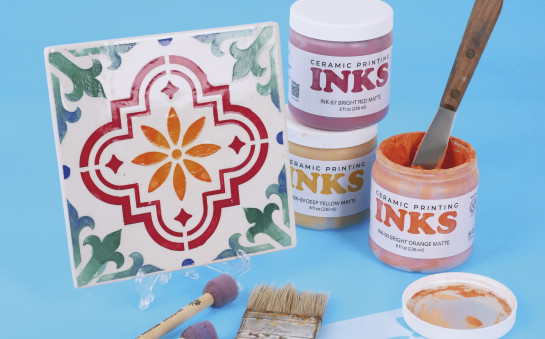Reduction Prints with AMACO Ceramic Inks

In this lesson plan, we guide you through the reduction print process using readily available tools to achieve a traditional reduction print look on your ceramic ware.
- AMACO Ceramic Printing Inks
- AMACO Velvet Underglaze
- AMACO LG-10 Clear Transparent Glaze
- 2 Low Fire Bisque Tiles
- 3” Square Thick Craft Foam
- Sticky-Backed Craft Foam
- Packing Foam
- Brayer
- Mist Bottle
- Sharpie Marker
- Scissors
- Cup and Brush
- Baby Wipes
- Tape

What you'll do:
Reduction prints were developed by Picasso. This printmaking technique uses a single block, which is progressively carved and printed in multiple layers to create a multicolored image.
We will use craft and packing foam rather than blocks to create our multi-colored image that will be printed on bisqueware tiles. With each stage, more of the foam will be taken away, meaning earlier colors are literally reduced from the surface. The process continues, color by color, until the final layer is printed.
For the color, we will use AMACO Ceramic Inks. These printmaking inks are specifically designed for use on ceramics. They are great for screenprinting, craft foam printing, and monoprinting!
By the end of this lesson, students will be able to:
- Understand and explain the reduction printmaking process as it applies to both traditional paper printmaking and ceramic surfaces.
- Utilize color theory to plan and execute a series of color layers that produce depth and contrast in the final design.
- Analyze and critique their own work and the work of their peers, discussing the effectiveness of design, use of space, and color choices.
Principles & Elements of Design:
- Value - refers to the lightness or darkness of a color or tone.
- Analogous Colors - colors located adjacent to each other on the color wheel.
Glossary:
- Brayer - a small roller tool used to apply ink evenly onto a printing surface.
- Plate or Printing Plate - refers to the surface onto which an image is created or transferred for the purpose of making prints.
- Glaze Fire - To heat glaze materials at a temperature high enough to melt and form a glassy surface coating when cooled.



